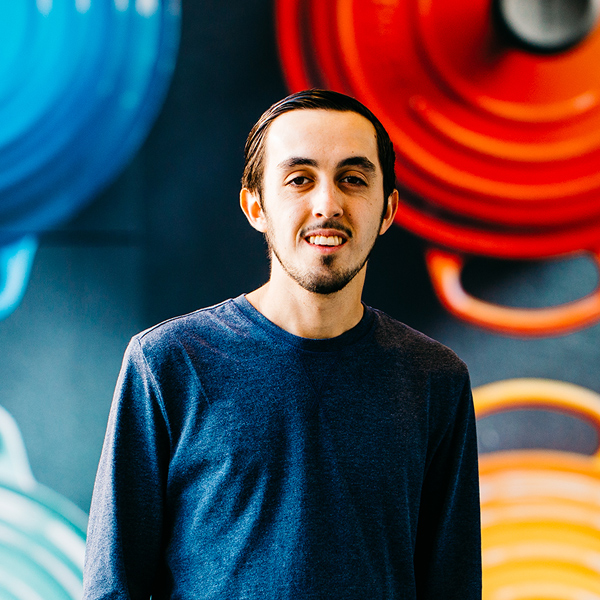It’s been clear now for quite some time that Facebook’s organic reach is declining.
Facebook’s algorithm undergoes periodic changes. Recently, Facebook pivoted to providing a more organic and fulfilling experience to its users. Hence, it curtailed the reach of businesses and brands.
So, as a marketer, if you’re struggling to generate results, it probably might not be your fault. Unless your follower’s number is in the thousands, your post won’t reach as many people as you would like.
So, what can you do about it?
Paid advertising is one of the ways you can counter this trend of declining organic reach.
To generate more reach and make your content go the extra mile, you could use Facebook’s Boost Post feature. You can also make use of a Facebook ad tool for better management of your Facebook ads.
But what exactly are Boost Posts, and how are they essential to the modern marketer? And most importantly, when to boost a Facebook post, and is boosting Facebook posts even worth it?
Simply put, boost posts expand the reach of your content and help it reach new audiences. To maximize your ROI, make sure you have a strong grasp of Facebook Ads fundamentals before experimenting with advanced tactics.
Below, we take a detailed look at Facebook Boost Posts how to do it, and how you can effectively utilize them to expand your content’s reach.
What is a Facebook Boost Post?
Boosting a Facebook post turns your regular content into a paid ad, helping you reach a wider audience beyond your Page followers.
Available to anyone with a business page, Boost Posts offers a hassle-free way of advertising on Facebook as you don’t need knowledge of Ads Manager. You simply pick a post from your page’s timeline and click on the Boost Post button.
Boosting a Facebook post can make your content go the extra mile and be seen by more people, including those who don’t currently follow your page but may be interested in your business. Businesses often overlook the real benefits of boosting, but understanding the key reasons to boost Facebook posts can help you maximize reach and engagement.
Why did Facebook introduce Boost Posts?
In 2012, Facebook’s Ad Manager was still in its early stages, and most business owners found it complicated to use. Therefore, Facebook introduced an easier way to sponsor your content and reach more people – “Promoted Post.”
This feature helped you create an ad campaign directly from your page without going to Facebook’s ads platform. “Promote Post” was later changed to “Boost Post.”
With the reduction in Facebook organic reach of brand content and engagement rates and the change in algorithms, boosted posts were introduced to help brands get more people to see their content.
Pre-requisites
Boosting a Facebook post is quite easy – you only need to have a business page on Facebook, business manager access, and a native post on the Page. You’ll also need an ad account since boosted posts require a budget.
Audience options
Facebook boost post enables you to reach a broader audience that’s not limited to your followers only. It also allows you to set parameters for your audience to target specific people. With a Facebook boost post, you can reach:
- People you choose through targeting
- People who like your page
- People who like your page and friends
How is Facebook Boost Post different from Facebook Ads?
Deciding when to boost a Facebook post and to run a Facebook ad campaign can be confusing, especially if you don’t know the key differences.
To help you make a decision, below are the differences.
1. Objective
When deciding whether to boost a post or use Facebook advertising, it’s essential to think about your goals for advertising so that you can create a strategy around that objective.
Boost post works on two objectives – engagement and website visits. The aim is to improve post visibility and engagement, such as post likes, comments, and shares. This method allows for a quick and inexpensive way to be on top of your customers’ mind.
On the contrary, Facebook ads offer much broader possibilities. They can be tailored for multiple objectives, including awareness, traffic, lead generation, reach, and conversions. If you want a deeper understanding of how ads work beyond just boosted posts, check out the comprehensive guide to Facebook ads, where we break down objectives, strategies, and optimization tips in detail. Additionally, Facebook Ads Manager allows you to customize ads further depending on your goal. For instance, you can add a call-to-action and use language and behavior targeting.
2. Scenario
Since several targeting options are available with the Facebook Boost Post, then boosting can be a viable option for different instances. Here are some circumstances where boosting a Facebook post is a better route.
- Feature Update: If you’ve added a new feature, such as a Shop section on your Facebook page, boosting can be an excellent way to let your followers know about the new features.
- New Content Posting: Facebook Boost Post is a great tool for promoting new content. Most marketers boost Facebook posts whenever they are sharing valuable information to reach more of their followers. While it’s better to boost a post that has a good organic reach, there are posts that you know will get better engagement if boosted.
- Build Brand Awareness: If you’re not necessarily looking for conversions but just want to create awareness, boosting is a better and cheaper option than Facebook ads. Since the opinions and actions of others influence people, increased engagement can provide valuable social proof. This way, you can raise brand awareness and build up a community. To dive deeper into strategies, check out the guide on building brand awareness.
- One-off Events: One-off events often don’t require full-blown campaigns. With just a little boost, you can get the word out and get more people to attend the event. This also applies to special offers and promotions. For instance, PanIQ Escape Rooms, a popular escape room company, uses the Facebook Boost Post to share discounts and special offers.
3. Results
Boost posts will be shown in the news feed, but you can decide the ad placement with Facebook ad campaigns. Thus, results may vary as engagement in the messenger will be higher compared to the news feed.
Do’s and Don’ts of Facebook Boost Post
Success on Facebook requires focus and a good strategy. Even with thousands of followers and great content, not promoting your posts correctly will reduce your chances of succeeding. To make it easier for you to boost your posts successfully, we have outlined some basic dos and don’ts.
Do’s
1. Set clear objectives and expectations
Before you click that “Boost Post” button, you need to define your goals and expectations. Evaluate what it is that you want to accomplish: is it more brand awareness, building a Facebook community, or increasing your sales? Setting your objectives will help you measure your strategy and make the necessary changes.
2. Restrict the time period
You should never run the same boost post for too long. Keep in mind that even successful boosts posts often decline in performance when you run them for over a week. This will also help avoid instances where a person sees the same boosted ad over and over again in their feed. The audience may get tired of your content.
3. Narrow down your audience
The Boost Post feature allows you to select targeting options for your post. By default, you can choose people who currently like your page or your followers, plus their friends.
However, you also have the option to create a custom audience for your boosted posts. Since you already know a lot about your audience, you should narrow down your audience as much as possible. The custom audience option allows you to target a specific demographic based on location, sex, age, or interests.
For instance, you can limit your targeting to specific places where most of your customers dwell or areas where you offer your services.
4. Boost Posts that are performing well
Posts that already have many comments, likes, and shares are the best posts to boost. A high engagement rate shows that the content was interesting to the audience. Followers are more likely to click on a post with 100 likes, 60 comments, and 42 shares than on a post with just 3 likes. Therefore, use the Facebook Insights guide to check which content is doing well and decide which ones are worth boosting further.
5. Use a tool to automate boosting
Social media marketing can be very time-consuming. Fortunately, some tools can help you make the process easier and smoother. Many social media scheduling tools, like SocialPilot, have an automated boost post feature that can help you save time and streamline your ads. For instance, SocialPilot can schedule and automatically boost your best-performing posts.
Don’ts
1. Promote to a wider audience
Many people tend to choose a broader audience when promoting their posts. Unfortunately, this is a mistake that you should never be tempted to make. Targeting a wider audience will reach more people, but not the ones that matter to your business. Hence, pick the right audience by smartly narrowing down who is likely to be interested in what you’re offering.
2. Run it for a longer time period
The number of days to run a Facebook boost post depends on the post’s nature and budget. Many people tend to think that the longer a boost post runs, the better the results. On the contrary, you should never boost a post continuously for more than 7 days. However, evergreen content can run for a longer period compared to newsworthy content.
3. Boost the same ad for a similar audience
While evergreen content is always great for boosting, you should avoid boosting the same ad for a similar audience repeatedly. Try experimenting with your ad copies with different audiences.
4. Boost post but fail to monitor
Some people boost posts and relax, waiting to get results. Unfortunately, this is not how it works. After you boost a post, you need to monitor its performance to gauge if the ROI was worth it. Analytics help you see what is working and what is not, so that you can make adjustments to your social media strategy for better results.
We interviewed several social media managers from different companies on how they are using the Facebook boost post feature and how it is helping businesses.
Many of them say they have found a great deal of success in boosting ads and believe that any company would benefit from boosting ads.
They believe that the decline in organic reach and the changes in Facebook algorithms have made boosted posts extremely vital in attaining success in social media marketing.
However, you’ll only attain success if you understand what boost posts are, how to use them, and what to expect from them. Below are the key insights from various social media managers on how they boost posts for optimal results.
Audience
All social managers interviewed believe the first step in successfully boosting an ad is understanding the ‘Audience.’ It would be best if you were very specific on whom you want to target by focusing on the demographics of the business.
Goal
Social media managers agree that boosting posts serves several goals. While some managers boost posts to get direct results such as sales and leads or share some information, there is a consensus that boosted posts should be a long-term strategy for showing value and keeping your audience engaged. Therefore, you should boost posts to increase engagement and build your brand.
Budget
Most managers spend between $50 and $150 to boost a single ad but spend more when they have a more significant and more extensive objective.
According to them, your budget will depend on your goals, your audience, and your timing.
When deciding on the budget, you have to evaluate whether to focus on reach, engagement, or traffic.
The primary influence, however, is the size of the audience you intend to reach. And it goes without saying, the more money you put behind it, the larger the audience it will reach.
Duration
The duration to run a boosted post depends on several factors, such as your goal, budget, and whether your post is time-sensitive. Most believe a boosted post should run for 3 to 5 days.
Which posts to boost?
Most social media managers concur that boosting your best-performing content is more effective than boosting a new post or one without much engagement.
Generally, most people post content and wait for it to gain some organic traffic before promoting it. If the content has a high engagement rate, it shows that it is interesting to the audience; therefore, the right choice for boosting.
However, the content to boost will also depend on your objective.
Analytics
As one social manager said, Facebook boost posts are about trial and error as you try to assess what works best for your niche and audience. It is, therefore, critical that you track the performance of your ads and adjust your strategy accordingly. A detailed look at Facebook ad analytics can help you understand which metrics matter the most for optimizing campaigns. Consequently, it’s advisable to start with a lower budget as you work out the adjustments in your plan.
We interacted with a few Real Facebook Post Users Boosting their Posts and shared their real-time insights with us.

Andrew Clark
ParkersJewellery
As Facebook’s organic reach continues to drop, marketers are starting to look for new ways to get posts in front of people. The cost of your boost post depends on your audience, your goals, and how many people you aim to reach.
Start with a lower budget and track performance. A couple of short experiments with $10 will help you work out the kinks in your strategy, see what’s working, and decide whether it’s worth investing more.
We usually stay at $10 per day and typically use the automated duration. By default, you can choose one day, seven days, or 14 days. We usually opt for 14 days.

Michael Anderson
I’m a big fan of boosting Facebook posts. I usually start with a lower budget (say less than $100) and then wait to see what the click-through rate and cost per click are before increasing it.
One of the good aspects of boosting posts on Facebook is that you can easily change your budget at any time, which shouldn’t impact performance.
If the boosted post has a higher-than-average CTR and a lower-than-average CPC, then I will increase the budget accordingly. I start by boosting them for anywhere between two weeks to one month. Then, once I’ve seen whether or not the boosted post is performing well, I will potentially update the schedule to allow a longer period of time.
Sometimes I boost a blog post that receives strong engagement with an inexpensive CPC, in which case I’ll keep it running for months.

Christian Loverich
I like to use Facebook posts as a commercial that runs 24 hours a day, 7 days a week, 365 Days a year non-stop. Boosted posts are designed for a long term strategy along with branding. They are not effective when misunderstood and used for direct results, leads, or direct sales from them.
You can use a boosted post to tell a story, to show value or to keep your target audience engaged with you, Facebook loves engagement on your posts since it means that the users are having a good experience and spending more time on the platform. I prefer to use boosted posts with video because it’s cheaper, more engaging, and you can create retargeting audiences out of them for my direct ROI campaigns.
Be careful with the size of your audience or the frequency of the post. It might so happen that the same person will see your boosted post repeatedly on their feed and get tired of your content and hide you from their feed. In that case, your account will get penalized, and then your ad costs will go up.

Ellie Headshot
I run our social media campaigns here at Whoever You Need, and we like to do a business of the week post every Thursday or Friday. To get more visibility to our member’s profiles, I always run a Post Engagement boost at £5 a time to get more post interactions.
I found with a £5 boost, and we tend to get around 4-8 post likes, with some also clicking through to the link.
We run each boost for 4 days, which gives us just the right amount of time for post interactions.
We had run £8 boosts for 5-8 days, or £10 boosts for 4-10 days but didn’t seem to get much engagement after the initial 4/5 days or so. It took a good few months to work out for just £5 a time instead of £10 each time.
We are not currently using a social media management tool, but we would love to use one to enhance our work effortlessly.

Jill Messinger
Typically, I spend between $50-100 per boosted post, depending on what I am trying to promote. The duration of the boosted post depends on the budget. Our agency includes a monthly boosted post-budget in our social media management packages. Boosting Facebook Posts are quite relevant in the time of declining engagement and reach.
Depending on the goal of your boosted post, you can increase video views, link clicks to a website, post engagement, or reach/impressions. Boosted posts are an excellent way to increase brand awareness using a smaller budget than you typically would with a Facebook Ad.

Gabriella Horvath
We are using Facebook ad boosts as one of our main marketing tools. We use it to reach more of our followers and share information, discounts, and special offers with them. It is also an excellent tool for communication on national holidays.
The content varies from promotional videos to communicating different discounts and raffles. We do see an increase in engagement when boosting a post. That is because we always boost our best content, which is likely to be interesting to our followers. The period of a boost depends on the content. An average would be a 5-day boost for a promotional message.
The budget depends on the content and timing, but it is around 10% of our online marketing budget. We are planning which posts to boost in advance. We are boosting the ones who are encouraging sales the most and the ones are adding the most value to our customers.

Andriy Koval
Vertix Media
It really depends on the client that we’re working with because we have a client of different calibre, and they are located all over North America and Europe. With one of the clients in Ukraine, we found that even a small $20 boost would generate impressive results (it is also a great niche that we’re able to target very accurately).
When we’re working with clients in North America, we generally start at around $100 on average and then start tweaking the campaign and creating several more. Eventually, we’re getting enough data for our Facebook Pixel to improve our targeting.

Md Mohsin
As Facebook’s organic reach continues to drop, marketers are starting to look for new ways to get posts in front of people. The cost of your boost post depends on your audience, your goals, and how many people you aim to reach.
Start with a lower budget and track performance. A couple of short experiments with $10 will help you work out the kinks in your strategy, see what’s working, and decide whether it’s worth investing more.
We usually stay at $10 per day and typically use the automated duration. By default, you can choose one day, seven days, or 14 days. We usually opt for 14 days.

Joel
We are managing Facebook Ads and periodically boost Facebook posts. We are mainly targeting the right audience as we approach the holiday season. Our Social media manager is Branding Monster- Julie Cimity in California, and we just began boosting our blog articles on Facebook about 3 months ago with a test budget of $500 a month.
The boosting varies for the blog subject, but we boost at least once a week. We have definitely found Facebook Boost Post to be relevant enough for our industry and also observed a noticeable increase in engagement boosting your posts. It depends on general applicability to readers usually. A blog post about birthday parties is probably only interesting to 1/10th of female readers between 30 – 60 at any one time.

BJ
As the Director of Demand Generation for opendorse, and an athlete social media marketing platform, and spent 8 years in an agency environment as the Director of SEO and then VP of Enterprise Accounts at SocialSEO. In both my in-house role and within an agency, boosting posts is a daily part of life. I currently run multiple campaigns of Facebook ads to support our demand generation efforts.
I’ve also found a great deal of success in boosting posts for employee recruitment. Our average budget is around $150 per post, but when we’ve got big initiatives, it can go higher. When it comes to more significant objectives, I’m a big fan of running boosted posts in conjunction with carousel ads.

Jeff Moriarty
Our business boosts posts when we release new items and have sales online and in stores. We usually spend about $100 to boost our posts to our fan base of about 7,000.
When releasing new items, we let them run for about 3 days. This is because we release new items on Friday and like it to run through the entire weekend.
With sales, we run them the length of the sale. Our company handles all Facebook marketing due to the high expense of agencies.
Conclusion
We are sure that with this blog, we have shared many useful points on topics like what Facebook boost post is, why you should boost your post, and how is it different from a Facebook ad.
Furthermore, how usually social media managers use this feature and decide which posts to boost. Most importantly, the dos and don’ts about Facebook boost post.
We are confident that with SocialPilot, you can do so much more with boosting Facebook boost posts for multiple clients anytime, anywhere.
.jpg)


